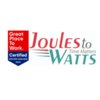


i
Filter interviews by
Ingenero Technologies Interview Questions and Answers
8 Interview questions
Selectivity can be controlled by optimizing reaction conditions, catalyst selection, and process design.
Optimize reaction conditions such as temperature, pressure, and reactant concentrations
Select appropriate catalysts to favor desired reactions over side reactions
Design the process to maximize the desired product yield and minimize byproducts
Use techniques like separation processes to isolate the desired product
Selectivity is the ratio of desired product to undesired products, while conversion is the percentage of reactant converted to products.
Selectivity measures the efficiency of a reaction in producing the desired product.
Conversion measures the extent to which reactants are converted to products.
High selectivity indicates a high proportion of desired product, while high conversion indicates efficient use of reactant...
Reactor selectivity is the ability of a reactor to produce a desired product while minimizing the formation of undesired byproducts.
Reactor selectivity is a key factor in determining the efficiency of a chemical process.
It is influenced by factors such as reaction conditions, catalysts, and reactant concentrations.
For example, in a catalytic hydrogenation reaction, high selectivity would mean that the desired prod...
Distillation column operation involves separating components based on boiling points, troubleshooting involves identifying and resolving issues.
Understand the process flow and operating conditions of the distillation column
Monitor temperature, pressure, and flow rates to ensure proper operation
Troubleshoot issues such as flooding, foaming, or poor separation efficiency
Inspect trays, packing, and internals for dama...
Polymerization equation involves the reaction of monomers to form a polymer chain.
Polymerization is a process where monomers react to form a polymer chain.
The general equation for polymerization is: (Monomer) n -> Polymer
Examples include the polymerization of ethylene to form polyethylene and the polymerization of styrene to form polystyrene.
Relief devices are safety devices used to protect equipment and personnel from overpressure situations.
Types include pressure relief valves, rupture discs, and safety valves
Pressure relief valves are the most common type and operate by opening to release excess pressure
Rupture discs are non-reclosing devices that burst at a predetermined pressure to relieve pressure
Safety valves are similar to pressure relief valv...
Relief devices such as Conventional, Balance bellow, and Pilot operated are used in process engineering to protect equipment from overpressure.
Conventional relief devices are simple and rely on a spring-loaded mechanism to relieve pressure.
Balance bellow relief devices use a bellows to balance the pressure on both sides of the valve, allowing for accurate pressure relief.
Pilot operated relief devices use a pilot v...
Distillation column separates components of a liquid mixture based on differences in boiling points.
Distillation column uses heat to vaporize liquid mixture
Vapors rise through column and condense at different heights based on boiling points
Separated components are collected at different levels of the column
Bottom of column collects high boiling point components, top collects low boiling point components
Ingenero Technologies Interview Experiences
10 interviews found
I applied via Recruitment Consulltant and was interviewed in Aug 2024. There was 1 interview round.
(2 Questions)
- Q1. Statistical Data questions
- Q2. Deep leaning questions
(2 Questions)
- Q1. POLYMERIZATION EQUATION
- Ans.
Polymerization equation involves the reaction of monomers to form a polymer chain.
Polymerization is a process where monomers react to form a polymer chain.
The general equation for polymerization is: (Monomer) n -> Polymer
Examples include the polymerization of ethylene to form polyethylene and the polymerization of styrene to form polystyrene.
- Q2. Compressor questions
(2 Questions)
- Q1. Types of relief devices
- Ans.
Relief devices are safety devices used to protect equipment and personnel from overpressure situations.
Types include pressure relief valves, rupture discs, and safety valves
Pressure relief valves are the most common type and operate by opening to release excess pressure
Rupture discs are non-reclosing devices that burst at a predetermined pressure to relieve pressure
Safety valves are similar to pressure relief valves bu...
- Q2. Types of relief devices are Conventional, Balance bellow & Pilot operated.
- Ans.
Relief devices such as Conventional, Balance bellow, and Pilot operated are used in process engineering to protect equipment from overpressure.
Conventional relief devices are simple and rely on a spring-loaded mechanism to relieve pressure.
Balance bellow relief devices use a bellows to balance the pressure on both sides of the valve, allowing for accurate pressure relief.
Pilot operated relief devices use a pilot valve ...
I appeared for an interview in Mar 2023.

(6 Questions)
- Q1. 1. Pumps details?
- Q2. 2. Distillation column operation and troubleshooting?
- Ans.
Distillation column operation involves separating components based on boiling points, troubleshooting involves identifying and resolving issues.
Understand the process flow and operating conditions of the distillation column
Monitor temperature, pressure, and flow rates to ensure proper operation
Troubleshoot issues such as flooding, foaming, or poor separation efficiency
Inspect trays, packing, and internals for damage or...
- Q3. 3. Existing process in your company
- Q4. 4. Details of Heater
- Q5. 5. Details about simulation understanding
- Q6. 6. Willingness to work in extended shifts without hoping for extra compensation.
(1 Question)
- Q1. Salary negotiation. For me it's bit unfortunate. I would like to bring to your attention that after the initial agreement and acceptance of the CTC, I trusted the process at Ingenero wholeheartedly. In goo...
Interview Preparation Tips
I applied via Walk-in and was interviewed in May 2023. There were 4 interview rounds.

(1 Question)
- Q1. On the basis of your resume
(1 Question)
- Q1. Designing knowledge
(1 Question)
- Q1. General interaction
Interview Preparation Tips
I applied via Referral and was interviewed before Nov 2022. There were 2 interview rounds.

(5 Questions)
- Q1. What is Reactor selectivity?
- Ans.
Reactor selectivity is the ability of a reactor to produce a desired product while minimizing the formation of undesired byproducts.
Reactor selectivity is a key factor in determining the efficiency of a chemical process.
It is influenced by factors such as reaction conditions, catalysts, and reactant concentrations.
For example, in a catalytic hydrogenation reaction, high selectivity would mean that the desired product i...
- Q2. How to control selectivity?
- Ans.
Selectivity can be controlled by optimizing reaction conditions, catalyst selection, and process design.
Optimize reaction conditions such as temperature, pressure, and reactant concentrations
Select appropriate catalysts to favor desired reactions over side reactions
Design the process to maximize the desired product yield and minimize byproducts
Use techniques like separation processes to isolate the desired product
- Q3. Difference between selectivity & conversion?
- Ans.
Selectivity is the ratio of desired product to undesired products, while conversion is the percentage of reactant converted to products.
Selectivity measures the efficiency of a reaction in producing the desired product.
Conversion measures the extent to which reactants are converted to products.
High selectivity indicates a high proportion of desired product, while high conversion indicates efficient use of reactants.
For...
- Q4. About your past work experience.
- Q5. Functioning of distillation column
- Ans.
Distillation column separates components of a liquid mixture based on differences in boiling points.
Distillation column uses heat to vaporize liquid mixture
Vapors rise through column and condense at different heights based on boiling points
Separated components are collected at different levels of the column
Bottom of column collects high boiling point components, top collects low boiling point components
Skills evaluated in this interview

(2 Questions)
- Q1. Pump hydraulic, PSV sizing, selection
- Q2. Chemical Engineering basic, distillation column
I applied via Referral and was interviewed before Oct 2023. There were 2 interview rounds.
(1 Question)
- Q1. Tell me about yourself
(2 Questions)
- Q1. Furnace operation related questions
- Q2. Unit operations related questions
I appeared for an interview before Apr 2024, where I was asked the following questions.
- Q1. Related to work experience
- Q2. Technical round
I applied via Walk-in and was interviewed before Nov 2021. There were 2 interview rounds.

(3 Questions)
- Q1. Basic Engineering & detailed engineering
- Q2. All things they will ask related to unit operations
- Q3. Pressure safety valve
Interview Preparation Tips
Top trending discussions






Ingenero Technologies Interview FAQs
Tell us how to improve this page.
Ingenero Technologies Interviews By Designations
- Ingenero Technologies Process Engineer Interview Questions
- Ingenero Technologies Senior Technology Engineer Interview Questions
- Ingenero Technologies Technical Lead Interview Questions
- Ingenero Technologies Data Analyst Interview Questions
- Ingenero Technologies Senior Process Engineer Interview Questions
Interview Questions for Popular Designations
Overall Interview Experience Rating
based on 12 interview experiences
Difficulty level
Duration
Interview Questions from Similar Companies
Ingenero Technologies Reviews and Ratings
based on 150 reviews
Rating in categories
|
Process Engineer
278
salaries
| ₹7.8 L/yr - ₹16.9 L/yr |
|
Senior Process Engineer
51
salaries
| ₹14 L/yr - ₹24 L/yr |
|
Data Analyst
49
salaries
| ₹9 L/yr - ₹16.3 L/yr |
|
Process Technology Engineer
25
salaries
| ₹9.8 L/yr - ₹17 L/yr |
|
Data Scientist
23
salaries
| ₹11.9 L/yr - ₹21.2 L/yr |

JoulestoWatts Business Solutions

Value Point Systems

Saama Technologies

Systems Plus
- Home >
- Interviews >
- Ingenero Technologies Interview Questions











